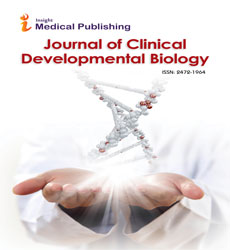The Tipping Point: The Balance between Excitatory and Inhibitory Synaptic Signal Transmissions
Yongli Chen
Yongli Chen*
College of Natural and Computational Sciences, Hawai’i Pacific University, Kaneohe, USA
- *Corresponding Author:
- Dr. Yongli Chen
Assistant Professor, College of Natural and Computational Sciences
Hawai’i Pacific University, Kaneohe, USA
Tel: 8082363547
E-mail: ychen@hpu.edu
Received date: December 19, 2015; Accepted date: December 19, 2015; Published date: December 23, 2015
Editorial
The human brain is the last frontier in our advancing of modern medicine. The balance between excitatory and inhibitory synaptic signal transmission is essential for the normal function of the central nervous system. Many neurodegenerative disorders are caused by the tipping of this delicate balance, such as epilepsy and schizophrenia. In addition, increasing evidences have demonstrated the importance of cross-talk between the excitatory and inhibitory neurotransmitter receptors, but their interactions are not well understood. The interactions between small molecules and receptors have been more extensively studied and a clearer picture is starting to form. Here, a few examples are discussed to illustrate the complexity of those interactions and the importance of protein-protein interactions.
The most commonly used addictive drug cocaine is well documented to have inhibitory effects on nicotinic acetylcholine receptor (nAChR), type A γ-amino butyric acid receptor (GABAAR), and dopamine transporter (DAT). Our unpublished results showed that it also inhibits the NR1/NR2A subtype of N-methyl-D-aspartate receptor (NMDAR). Another very addictive substance, alcohol also has multiple known sites of action, such as GABAAR, glycine receptor (GlyR), and both the NMDA and the α-amino-3-hydroxy-5-methyl-4-isoxazolepropionic acid receptor (AMPAR) subtype of glutamate receptors.
Not only addictive drugs target multiple neurotransmitter receptors and ion channels, therapeutic medicines also exert theirs effects on various proteins. The US Food and Drug Administration (FDA) approved drug memantine for treating mild to severe Alzheimer’s disease slows down the disease progression by blocking the NMDAR. Recently, memantine was confirmed to be a non-specific antagonist of the nAChRs as well.
Another example is pentylenetetrazole (PTZ). PTZ is injected subcutaneously to stimulate animal seizure model, one of the most widely used animal seizure models for discovery and development of new antiepileptic drugs for more than six decades now. The earlier rationale for the subcutaneous PTZ seizure test is PTZ inhibits the GABAAR, therefore tips off the balance between excitatory and inhibitory neuronal signal transmission to over excitation. However, PTZ was later found to inhibit many other ligand-gated ion channels (LGICs), including glycine, glutamate and serotonin receptors, and recently nAChR. Multiple molecular targets were also confirmed for some newly developed anti-epileptic drugs (AEDs) using the PTZ and other animal seizure models, and new targets were proposed to for new AEDs development to treat refractory epilepsy.
In a word, extensive research of the past few decades on the modulation of neurotransmitter receptors by small molecules suggest that there are multiple action sites for many of the common addictive and therapeutic drugs, whose actions often change the balance of excitatory and inhibitory synaptic signal transmission. Therefore, the future of mechanism-based drug development needs to put more focus on the modulation of interaction of multiple receptor/ion channels, which is to say that we need to study the functional modulation of receptors by small molecules in the presence of other co-existing receptors. Proteinprotein interactions initiated by small molecules may be the key for their therapeutic activities.
Involvement of multiple receptors in many neurodegenerative disorders manifests the importance of cross-talk between proteins. The development of new drugs focusing on a single target proved to be ineffective. The lack of understanding of pathophysiology of neurodegenerative disorders on the molecular level is one of the difficulties in developing effective drugs for neurodegenerative disorders. The reductionist approach is the other major obstacle.
The reductionist approach needs to be re-examined and confirmed by more systemic approach. The re-emerging of the holistic approach of system biology will shed new lights on our understanding of the human brain and development of new and more effective drugs. On the other hand, we also need to develop new methods and technologies to study the function of multiple receptors simultaneously, such as single protein imaging and fluorescence indicators for different ions, including genetically encoded ion indicators. The success of various genetically encoded calcium indicator should inspire for developing indicators for Na+, K+, and Cl-.
The President’s BRAIN initiative (Brain Research through Advancing Innovative Neurotechnologies) started in the US in 2013 will be the best catalyst we have so far to revolutionize our understanding of the human brain and to lay a solid foundation for drug development for neurodegenerative disorders.
Open Access Journals
- Aquaculture & Veterinary Science
- Chemistry & Chemical Sciences
- Clinical Sciences
- Engineering
- General Science
- Genetics & Molecular Biology
- Health Care & Nursing
- Immunology & Microbiology
- Materials Science
- Mathematics & Physics
- Medical Sciences
- Neurology & Psychiatry
- Oncology & Cancer Science
- Pharmaceutical Sciences
